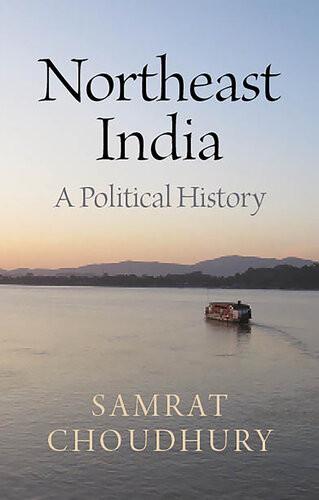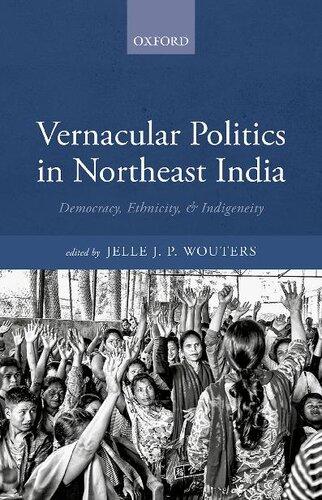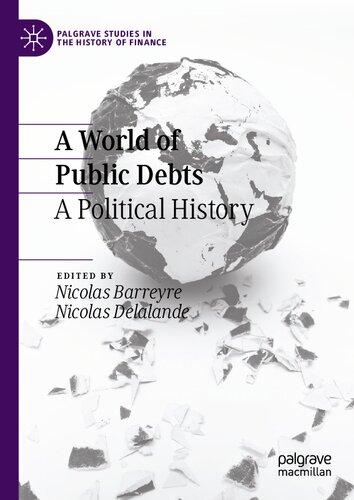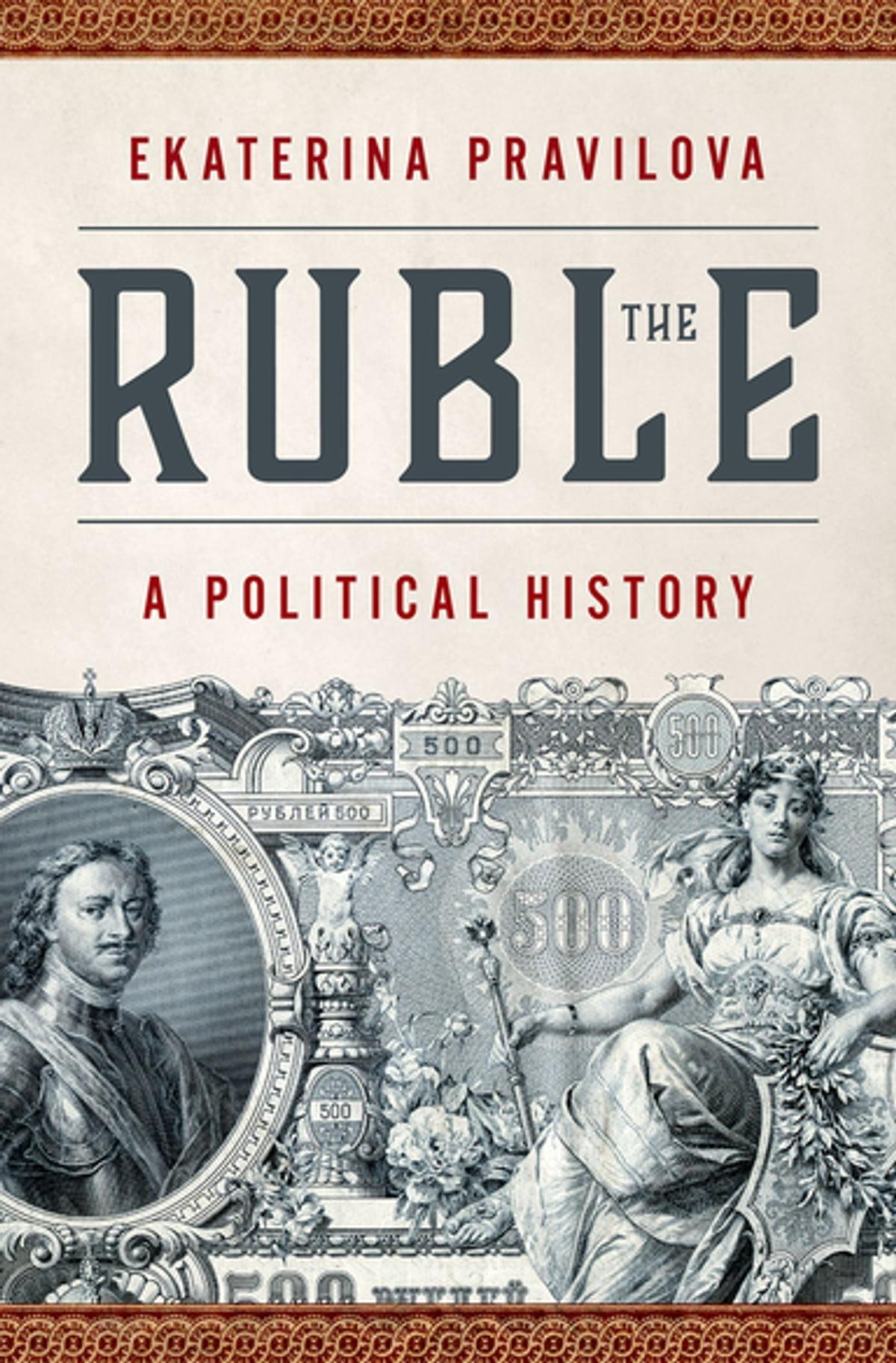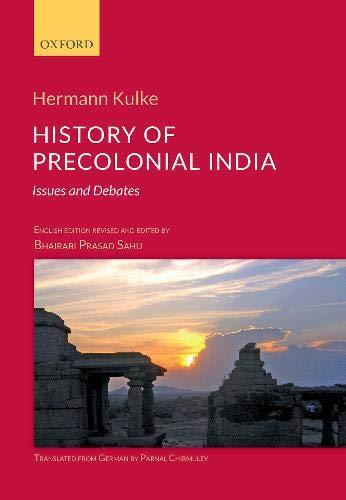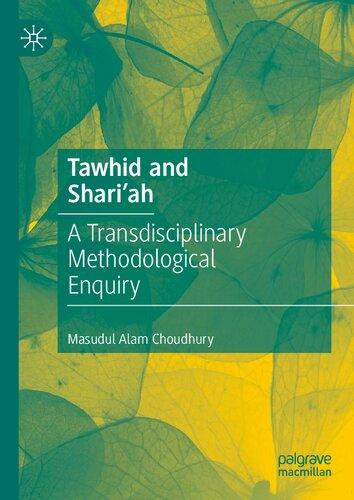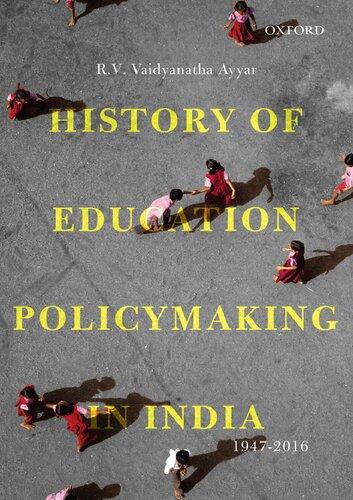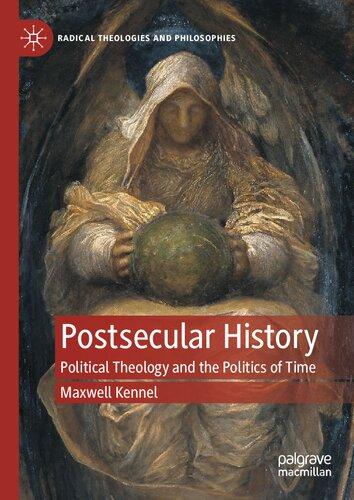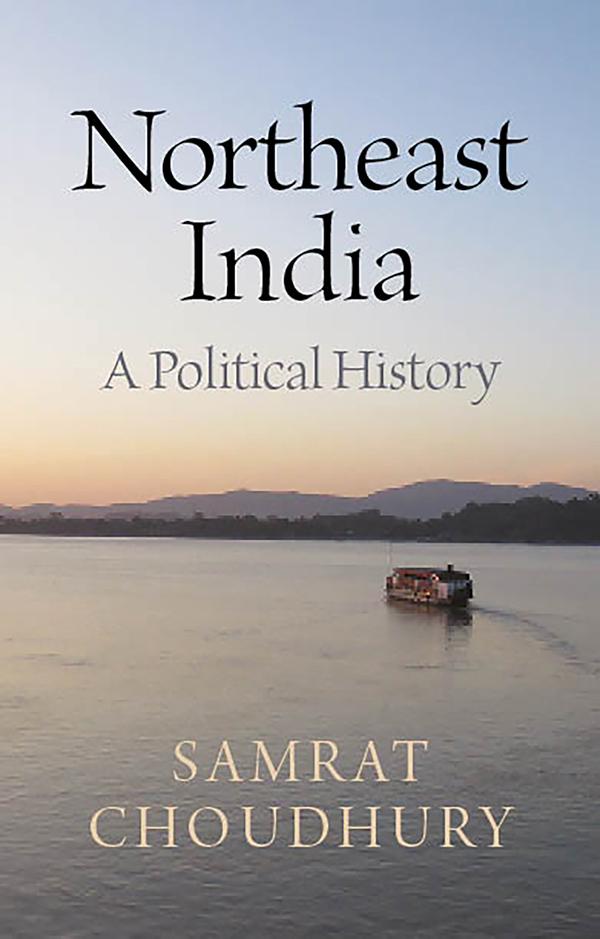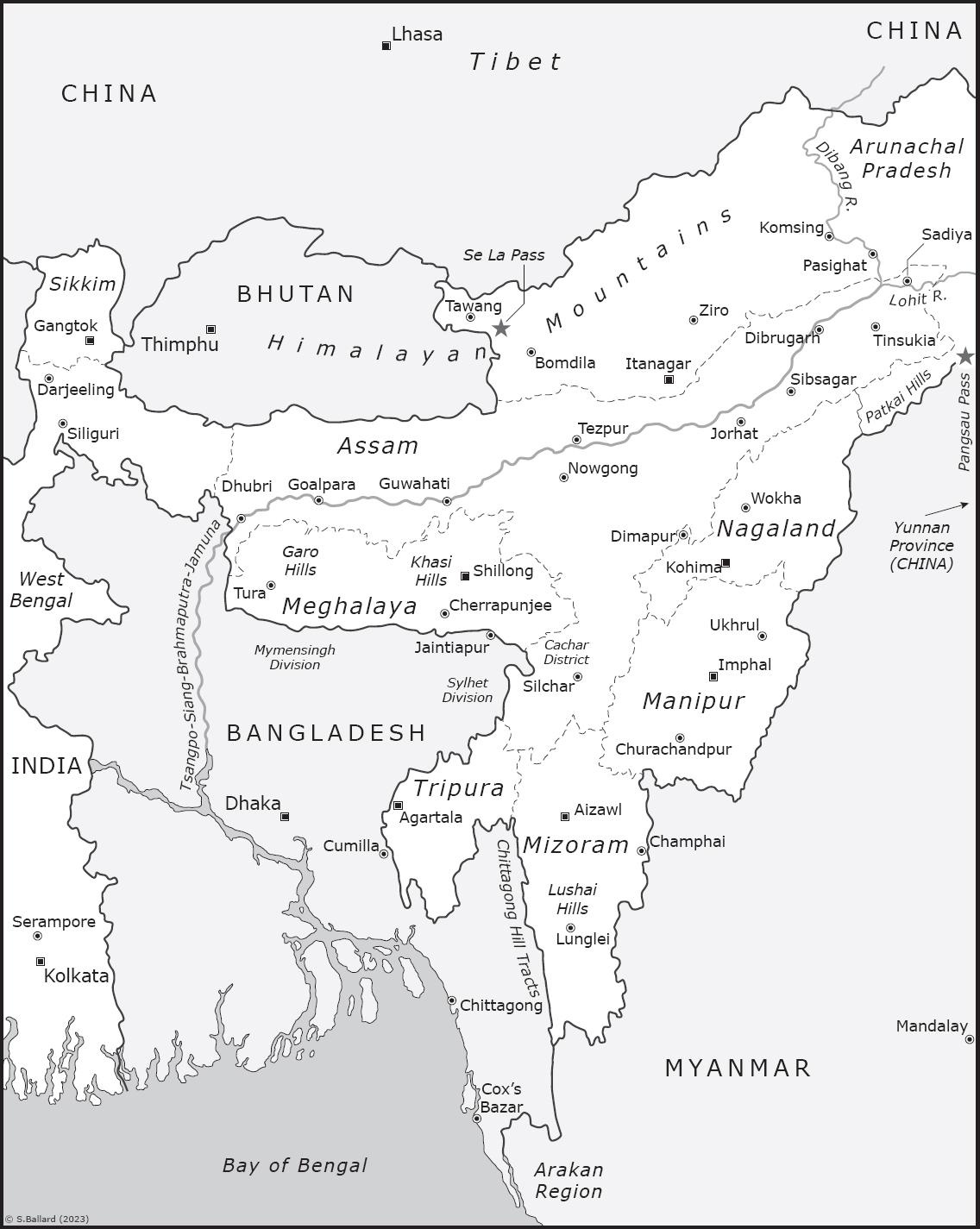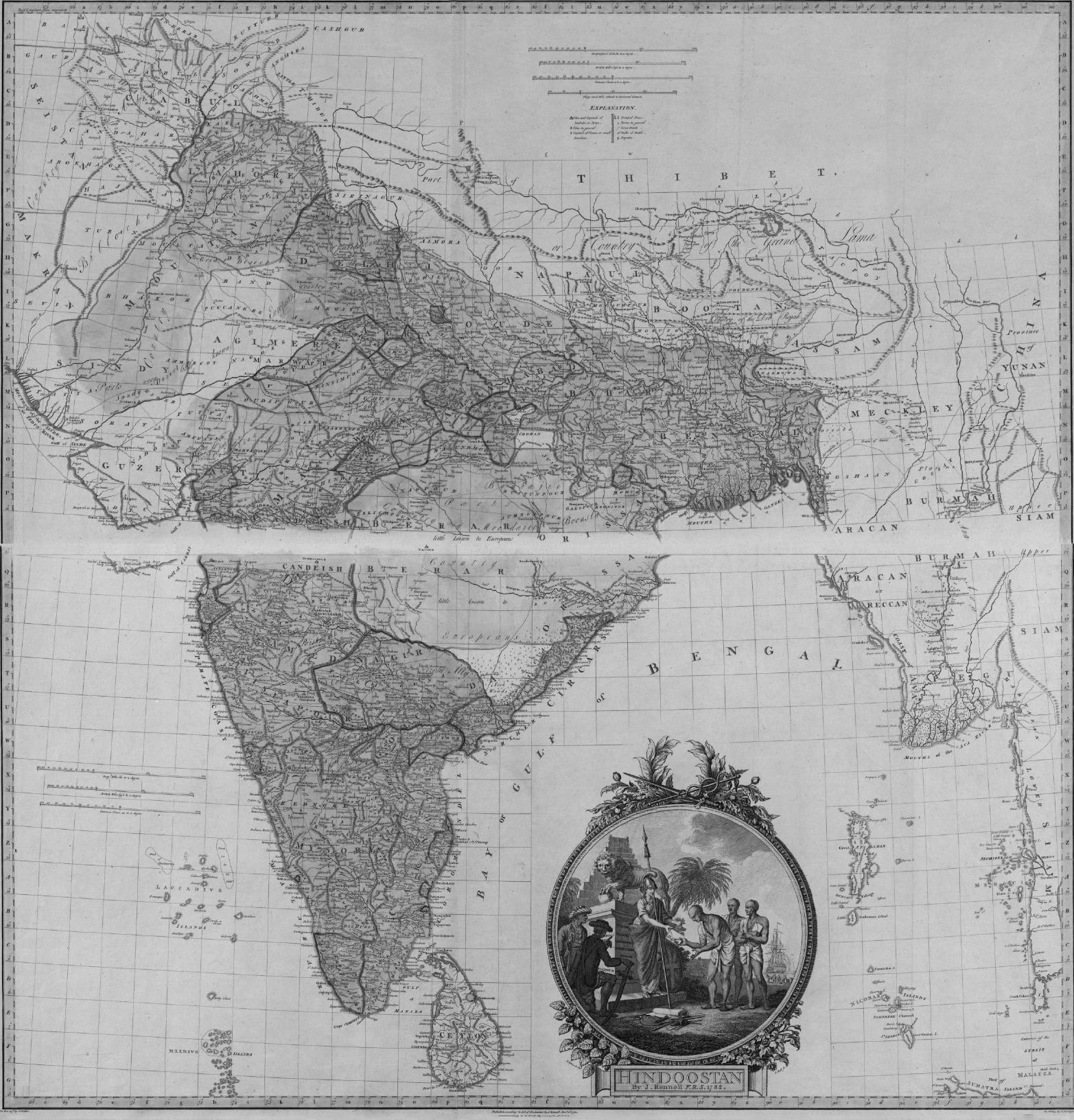PREFACE
In contemporary maps of India, the Northeast is a protuberance that hangs on to the rest of the country by a slender thread, barely 21 kilometres wide at its narrowest point. It is a region surrounded by foreign countries. Tibet, now the Tibetan Autonomous Region of China, and the mountain kingdom of Bhutan, lie to its north and northwest. Myanmar and Bangladesh are to the southeast and southwest. The Himalayas stand tall as a formidable, but by no means impassable, natural barrier in the north. The southeast is lined by the hills and jungles of northern Myanmar. Flowing through it, down the middle, is the central geographical feature of the region, the Brahmaputra river. Throughout history, the fertile valley of this vast river has been at the heart of the region’s politics. It was and is the most populous part of the land.
The geographical region is internally comprised of seven states of the Indian Union, which are often referred to as the ‘Seven Sisters’. These are, in alphabetical order, Arunachal Pradesh, Assam, Manipur, Meghalaya, Mizoram, Nagaland and Tripura. The official region, however, also includes an eighth state, a late entrant that sits geographically separate from the rest—the former Himalayan
kingdom of Sikkim, which became a part of India in 1975 and was inducted into the North Eastern Council, a government body of the region’s states, in 2002. The Northeast as it exists now is therefore more of an administrative construct rather than a historical region with a shared past.
This book looks at the journeys through time by which each of these states entered modern India and acquired their present shapes. Since all of them border foreign countries, the making of some of those boundaries is also an inescapable part of the journey. The states now all share similar political and administrative structures under the Indian constitution. They are all run by governments headed by chief ministers and their councils of ministers, assisted by bureaucracies led by chief secretaries. These ministers must first win elections. They often do so with campaigns run by their parties on issues of identity, which remains a central matter in the politics of the region. Two of these are identities based on language and religion. The emergence of the current print vernaculars and the entry of major world religions into states of the region are therefore key parts of the story.
The sheer internal diversity in Northeast India is mind-boggling. Credible estimates put the number of languages spoken in the region at about 220, although there are claims for higher numbers. There are adherents here of all the world’s major faiths. There are Hindus, of course, but there are also Christians, Muslims, Buddhists, Sikhs and animists. Only two of the states in the geographical region —Assam and Tripura—have clear Hindu majorities; two others, Manipur and Arunachal Pradesh, have roughly equal numbers of Hindus and Christians while three—Nagaland, Mizoram and Meghalaya—have Christian majorities.1 About a third of the population of Assam, the most populous state in the region, is Muslim. This means that the Muslim population in the region exceeds the entire population of the Christian-majority states. By percentage, the highest concentrations of Buddhists in India outside the Union Territory of Ladakh are in the Northeast states of Sikkim,
Arunachal Pradesh and Mizoram, where they constitute local majorities in certain areas.
Naturally, relations between these diverse communities, jostling for space and power, have not always been friendly. There are long, complicated and contested histories of ethnic, linguistic and religious tensions and conflicts between several of the region’s communities, which continue to play an active part in today’s politics. The fact that each of these communities has its own unique history and identity, and that there are several politically significant communities in even the smallest states, makes the task of writing any account of the region a difficult and fraught one. Moreover, there are also rightwingers of various hues who have long fought overtly and covertly on behalf of clashing nationalisms, big or small. What pleases the champions of one such group inevitably tends to annoy those of another, and vice versa.
It is not my aim to either please or displease anyone. I have therefore tried to report facts and events as honestly and accurately as possible, using standard sources, and have avoided interpretations of my own except in the concluding chapter. The language and worldviews of the original texts have been retained unchanged. This approach has the demerit of sometimes including outdated names and terms and reflecting old prejudices, but it also has the merit of reducing the anachronistic tendency to refashion the past using the values of the present.
My effort has been to write a readable narrative account guided by the two eyes of history, geography and chronology. Naturally, this effort is bound to involve simplification as well. The diversity of the region makes it nigh impossible for a single volume or author to chronicle the entire past of every community in detail. What I hope to have done with this book is provide for readers an accessible introduction to the political history of Northeast India.
TEA, CHRISTIANITY AND MODERNITY
ENTERING INDIA AND THE MODERN WORLD
What is now Northeast India lay far beyond the easternmost limits of the Indus Valley Civilisation, the oldest known civilisation on the Indian subcontinent. No empire of ancient India is known to have ever ruled the densely forested hills of this region which separates and connects South Asia with Southeast Asia and China. There is no evidence that the rule of the Mauryan empire, the first great Indian empire, extended so far east, although an ancient text, the Arthashastra, mentions products that suggest trade ties. The Gupta empire at its zenith extended as far east as Pundravardhana, corresponding to today’s northern Bangladesh and the Indian area of North Bengal. The kingdom of Kamrup, associated with today’s Assam, lay beyond this, further east. It finds mention in the Allahabad Pillar Inscription of Samudragupta, dated to around 350 CE, as a frontier territory whose ruler paid tribute to the great emperor—the first mention of the area in the historical record.
There is, however, an older kingdom of myth and legend to which the Kamrup kingdom is generally believed to be the inheritor. This was the kingdom of Pragjyotish, the land of eastern light. Its precise location and extent are unclear; there is mention of the eastern sea, and marshes, suggesting a southern boundary close to the Bay of Bengal and the Sundarbans. Its ruler Bhagadatta finds mention in the great epic, the Mahabharata, as chief of the Mlechchhas, the Brahminical term for ‘barbarians’ who did not observe distinctions of caste—thus placing them outside ancient Hindu society, and their territories beyond the cultural and social geography of Aryavarta, the ‘land of the Aryans’.1 Bhagadatta is described as a great warrior and a son of Naraka, king of the Asuras, who is himself characterised as a son of the earth goddess. Hindu mythology divides the world between the gods, known as Devas, and the Asuras, Rakshashas and Danavas, powerful and magical beings characterised as evil, who battled the gods. The tales in the Mahabharata include one of mortal combat between King Bhagadatta, fighting astride an armoured battle elephant, and the epic’s hero, Arjuna, on a horsedrawn chariot with the god Krishna acting as his charioteer. In the end, Bhagadatta and his elephant are both slain—but not before Lord Krishna, one of the main gods of the Hindu pantheon, has had to break his vow of non-participation in combat in order to block a magical weapon hurled by Bhagadatta at Arjuna.
Curiously, the king Bhagadatta, in this account, was also said to be accompanied by Yavanas, a word that usually connotes Greeks, and was portrayed as being surrounded by peoples described as Kiratas and Cinas. The linguist Suniti Kumar Chatterji, in his book Kirata-Jana-Krti, published in 1951, wrote:
It is the consensus of opinion among Indologists that in Sanskrit the term Kirata indicated the wild non-Aryan tribes living in the mountains, particularly the Himalayas and in the North-eastern areas of India, who were Mongoloid in origin. These Kiratas were connected with the Cinas or the Chinese, the Bhotas or the Tibetans, and other Mongoloid peoples.
According to Chatterji, ‘With the single exception of the Khasis and the connected Jaintias (Syntengs) of Assam, the Mongoloid peoples who are found in India are all speakers of languages and dialects belonging to the Sino-Tibetan or Tibeto-Chinese speech family.’2
Chatterji estimated that the Tibeto-Burman speakers had dispersed from the area around the source of the Yangtze Kiang in China:
In a similar way, the Chinese province of Yun-nan, to the east of Assam and Burma, formed the nucleus of the Thai (Dai) or Siamese tribes for their southward trek into Siam and IndoChina (Viet-nam). It seems quite probable that long before 1000 B.C. some of these early Tibeto-Burmans had penetrated within the frontiers of India, either along the southern slopes of the Himalayas, through Assam (and established themselves in the sub-Himalayan tracts as far west as Garhwal and Kumaon), or by way of Tibet, going up the Tsangpo or Brahmaputra and then crossing the Himalayan barrier into Nepal and Garhwal-Kumaon.3
Most of the tribal populations that inhabit Northeast India to this day speak languages from the Tibeto-Burman family.
The earliest literature that has been found to date of the people and lands in what is now Northeast India is the account of the Chinese Buddhist pilgrim Hiuen Tsang, who was in the kingdom of Kamrup in the mid-seventh century CE. Hiuen Tsang was studying the ‘profound law of Buddha’ at the Nalanda monastery in Magadha, in south Bihar, when Kumar Bhaskar Varman, the king of Kamrup, sent messengers to invite him to his capital. The pilgrim described ‘going east 900 li or so’ (about 240 kilometres) from the kingdom of Pundra-Vardhana, corresponding to northern Bangladesh and North Bengal, and ‘crossing the great river’—the Karatoya, probably corresponding to today’s Teesta or Brahmaputra—to arrive in Kamrup. Hiuen Tsang wrote:
The country of Kamarupa is about 10,000 li [nearly 2,736 kilometres] in circuit. The capital town is about 30 li… The climate is soft and temperate…the men are of small stature and their complexion a dark yellow. Their language differs a little from that of mid-India… They adore and sacrifice to the Devas and have no faith in Buddha… There are abundant Deva temples, and different sectaries to the number of several myriads.4
The language of the people, according to Hiuen Tsang, differed ‘a little from that of mid-India’, meaning the Gangetic plains to the west.
The only written material to have been unearthed from the Kamrup kingdom from the remote past, apart from rock inscriptions, are the so-called Nidhanpur and Dubi copper plates, a bronze seal attached to the Dubi plates, and one clay seal found in Nalanda in Bihar. The Nidhanpur plate was found in the village of Nidhanpur in Sylhet district of today’s Bangladesh, while the Dubi plate was discovered in a village called Dubi in Assam’s Barpeta district. The Nidhanpur plates describe a renewal of land grants by the king, Bhaskar Varman, to a group of Brahmins. The Dubi plates and seal, also issued by the same king for a land grant renewal, trace the genealogy of the Varman kings from the asura Naraka and his son Bhagadatta. The language of the inscriptions is Sanskrit. However, Sanskrit, the language of scripture, was not the spoken language of the common people.
The linguist Suniti Chatterji wrote of Hiuen Tsang’s account:
it is curious that, according to him, the language of the Kamarupa people ‘differed a little’ from that of mid-India… one would expect one and identical language to have been current in North Central Bengal (Pundra-Vardhana) and North Bengal and West Assam (Kama-rupa) in the 7th Century since these tracts, and other parts of Bengal, had almost the same speech, at least in morphology, in the 15th and 16th
centuries, as can be seen from extant remains in Bengali and Assamese.
Chatterji surmised that ‘perhaps the “differing a little” of the Kamarupa speech from the speech of mid-India refers to those modifications of Aryan sounds which now characterise Assamese as well as North and East Bengali dialects’.5
The Varman dynasty was replaced by the Mlechchha dynasty started by a king named Salastamba, who claimed descent from Narak-Asura. His line ended and was replaced by one begun by a king named Brahma Pal around 1000 CE. In about 1198 CE, Bakhtiyar Khilji, a general in the army of the first Muslim sultan of Delhi, Qutubbuddin Aibak, having conquered Bihar and Bengal, embarked upon an expedition through Assam to try and conquer Tibet. He faced little resistance on his way there. His advance was eventually checked by an army described as being of Mongol horsemen, and on his way back he found that the king of Kamrup had destroyed the stone bridge across the river Karatoya by which his army had crossed, and was preparing to attack him with overwhelming force. His forces were besieged and only Khilji himself, with a few hundred horsemen, managed to reach the opposite bank of the river.6
The course of history of the region was changed by a band that entered the area from the east rather than the west. In 1215 CE, a prince of the Tai kingdom of Mong Mao, from what are now the borderlands between Myanmar and Yunnan in China, left home with a band of around 9,000 men. They arrived, after thirteen years of wandering, in the upper reaches of the Brahmaputra valley. Here, Prince Siu Ka Pha (or Sukapha) began establishing a kingdom with its capital at Charaideo. This would in time become the great Ahom dynasty that ruled large parts of the Brahmaputra valley until the advent of the British East India Company, and that gave its name to the present state of Assam.
The next three centuries were marked by battles and wars between the Ahoms and the other kingdoms of the area, over all of
which, eventually, the Ahoms prevailed. The Chutiya kingdom in the easternmost tracts of the Brahmaputra valley, and the Koch kingdoms at the western end, were the last of the local powers to be defeated. By the time this was accomplished in the sixteenth century, the Ahom empire had a new and far more powerful rival to contend with.
During the reign of Akbar the Great, the Mughal empire came to include nearly all of Bengal. A split in the Koch kingdom that ruled western Assam and north Bengal, and a civil war between the western Koch kingdom of Koch Bihar and its eastern cousin Koch Hajo, led, during the reign of Akbar’s successor Jehangir, to the annexation of the lands west of the river Barnadi in today’s central Assam, to the Mughal empire. The eastern Koch king sought assistance from their traditional rivals, the Ahoms, to stave off the Mughal challenge. A series of battles followed between Mughal armies on the one side and the Koch and Ahom forces on the other. In the seventeenth century, during the reign of Jehangir’s successor Aurangzeb as the Mughal emperor, his general Mir Jumla, a Persian from Isfahan who was then the Governor of Bengal, led an invasion of the Ahom kingdom. In March 1662, the Ahom capital Garhgaon fell to the Mughals, and the palace of the king, Jayadhwaj Singha, who had fled, was occupied by Mir Jumla. However, the rains and floods with their accompanying diseases—the scourge of all armies that invaded the Brahmaputra valley—had set in. The rising waters cut off Mir Jumla’s communication and supply networks, and the Ahoms began a guerrilla resistance.
By the time the rainy season ended, Mir Jumla had fallen seriously ill. A peace treaty was concluded by which the Mughal forces agreed to withdraw, on payment of 20,000 ‘tolas’—more than 200 kilograms—of gold; six times that amount of silver; and the delivery of the Ahom king’s minor daughter, Ramani Gabharu, to the Mughal imperial harem. Mir Jumla died of illness on his way back to Dhaka downriver via the Brahmaputra. A few years later, when hostilities resumed over unpaid war indemnities, the Ahoms under their celebrated general Lachit Borphukan successfully recaptured
their lost territories by defeating the Mughal forces led by Raja Ram Singh of Amber, a principality near Jaipur in Rajasthan, at the Battle of Saraighat in 1671.
The Ahom rulers did not rule unchallenged for very long. Internal strife erupted in the kingdom, where there was a rebellion that involved religious and caste differences between adherents of two Hindu sects. The rebellion by followers of a Vaishnav7 sect called the Moamaria destroyed the Ahom king’s power between 1769 and 1805 in a series of revolts that left the kingdom ripe for invasion.
The story of the decline of the Ahom kingdom, and the birth of modern Northeast India, begins with religion—and cups of tea.
The place where it all started was Sivasagar (then Sibsagar), in the upper reaches of the Brahmaputra valley, around which the remains of a succession of Ahom capitals down the ages lie scattered. Today it is a sleepy town where the main tourist attraction is an early eighteenth-century temple called the Siva Dol, dedicated to the god Shiva, the ascetic lord of destruction in the Hindu trinity. This large temple is flanked by two smaller ones dedicated to Vishnu, the preserver of creation, and Durga, a warrior-goddess, who is an avatar of Shakti, a Sanskrit word that means power or energy. They represent the three main sects of Hinduism—the Shaiva, Vaishnava and Shakta. The temples were built during Ahom rule in the early eighteenth century by a ‘Bor Raja’, or ‘big king’, who was not a king—she was a queen named Phulesvari.
When the Ahoms arrived in Assam in 1228, they had their own religion and spoke a language related to Thai and Lao. The royal family, the priests of the old faith, and the leading nobles of the king’s court retained these for over 400 years. However, Hindu culture had begun to enter the Ahom court in the early 1400s during the reign of King Sudangpha, who was known as Bamuni Konwar, meaning ‘Brahmin Prince’, because he had been raised by a Brahmin couple. King Sutamla, also known as Jayadhwaj Singha, who
ascended the throne in 1648, was the first Ahom monarch to formally adopt Hinduism. Despite this, there were subsequent conflicts between some Ahom rulers and the Vaishnav Hindu monasteries known as ‘Sattras’. During the reign of King Gadadhar Singha in the late 1600s, according to the chronicles known as Tungkhungia Buranji, a golden idol was taken from the Dakhinpat Sattra and melted, with the gold being used for an Ahom temple in Charaideo. His successor Rudra Singha ended the persecution of the Vaishnav Sattras but also began to patronize their rival Sakta sect. The Hindu influence peaked under King Sutanphaa, also known as Siva Singha, who ascended the throne in 1714. He became a disciple of a Brahmin priest from Bengal, Krishnaram Bhattacharjee, who had been invited to the Ahom kingdom by his father, King Rudra Singha (or Sukhrungphaa). Siva Singha appointed Bhattacharjee chief priest of the famed Kamakhya temple in Guwahati. When Brahmin astrologers in 1722 predicted that his rule would soon come to an end, Siva Singha made large donations for building temples, including the ones in Sivasagar, in an effort to conciliate the gods. He also attempted to subvert the alleged decree of fate by declaring his queen, Phulesvari, a former temple dancer, as the king, and turning over the royal symbols of authority to her.
The queen was a staunch devotee of Durga and followed the traditions of Shakti worship, a distinguishing feature of which was blood sacrifices—in sharp contrast to the Vaishnava tradition of Hinduism which emphasises vegetarianism. ‘She was even more under the influence of the Brahmans than her husband, and, in her consuming zeal for Shakta Hinduism, such as so often distinguishes new converts, she committed an act of oppression which was destined to have far-reaching and disastrous consequences’, wrote Edward Gait in his HistoryofAssam:
Hearing that the Sudra Mahanta of the Vaishnava persuasion refused to worship Durga, she ordered the Moamaria and several other Gosains to be brought to a Sakta shrine where sacrifices were being offered, and caused the distinguishing marks of the Sakta sect to be smeared with the blood of the
victims upon their foreheads. The Moamarias never forgave this insult to their spiritual leader, and half a century later, they broke out in open rebellion.8
In 1769, King Rajeswar Singha passed away and was succeeded by his brother Lakshmi Singha. The rebels, with the assistance of three disgruntled Ahom princes, rapidly took over the country up to the Ahom capital of Rangpur on the outskirts of Sivasagar, imprisoned the new king, executed many of the nobles and replaced them with their own leaders. However, in short order, the newly minted kings and nobles acquired the airs and vices of the old. The late Rajeswar Singha’s queen, Kuranginayani, a princess from the neighbouring kingdom of Manipur further east, rallied the Ahom forces, killed the rebel chief Ragha Moran who had captured her for his harem, and retook the capital. The royalists successfully held off rebel counterattacks with the help of Manipuri cavalry that came to the aid of their princess.
A few years on, hostilities resumed again, with success for the rebels whose numbers were boosted by a tribe from what is now Arunachal Pradesh, the Nyishi, and their serfs residing in the border areas of the Ahom kingdom, known then as ‘Dafla-bahatiyas’. The new Ahom monarch, Gaurinath Singha, was forced to flee downriver along the Brahmaputra from Rangpur to Nagaon in 1788. The king of Manipur again sent forces, but on this occasion, the Moamarias bested the Manipuri cavalry by surprising them in thick jungle. The Ahom king then escaped further downriver to Guwahati. There he found himself facing trouble from another set of rebels. A few hundred ‘Doms’, or fishermen, taking inspiration from the Moamarias —whose adherents were also largely drawn from similar castes considered low in the Hindu caste hierarchy attacked the king’s quarters and set it on fire.
The Ahom chronicle known as Tungkhungia Buranji recounts:
The King, seized with fear in apprehension of a battle, crossed the stockade and proceeded down in a boat by the Brahmaputra to Nagarbera. One Rausch Saheb used to live in
Bangalhat. The King had despatched to him Bika the Majindar of Gauhati [Guwahati], and Bhaba Kataki, with the request to arrange for the deputation of a contingent of sepoys from Calicata.9
And so it was that on a request from deposed King Gaurinath Singha, sent through a European merchant in Bangalhat near the modern town of Goalpara, seven companies of the East India Company under the command of Captain Thomas Welsh arrived from Calicata (or Calcutta) to save the Ahom king from his own subjects. This was the beginning of the end of Ahom rule, and the first step towards colonisation and the invention of modern Northeast India.
The well-armed and well-trained sepoys of the Bengal Native Infantry made short work of the rebel forces. The East India Company forces were soon withdrawn on the orders of the new Governor General, Sir John Shore, but before departing, Captain Welsh secured a treaty from the Ahom king that opened up free trade between the kingdom and neighbouring Bengal, of which the British were now the rulers. According to the Tungkhungia Buranji, while departing, Welsh and his men took with them the Ahom king’s treasure, including a loot of 400,000 pieces each of gold and silver ornaments.
Barely twenty years later, fresh problems arose. The new teenage king Chandrakant Singha’s powerful prime minister Purnananda Buragohain, and the Ahom viceroy in Guwahati, Badanchandra Barphukan, fell out badly. Barphukan, fearing for his life, made his way to Calcutta to seek military help from the Company Raj. His request was turned down. He then made his way to the court of King Bodawpaya of Burma, among whose consorts was a woman named Rangili Mepaya from Assam. Barphukan received a more helpful response from the Burmese ruler and in 1817 he invaded the Ahom kingdom at the head of a Burmese army. The Ahom forces were easily defeated and the new capital of Jorhat, along with King Chandrakant Singha, fell into Burmese hands in 1818. The king sent
a princess from the royal family, Hemo Aideo, to the Burmese king’s harem and made his peace with Burmese overlordship.
The situation did not last long. Barphukan was assassinated by a soldier at the instigation of the queen-mother. His rival Purnananda Buragohain had also died by then, and Buragohain’s son Ruchinath now once again sought British help in retaking the kingdom. Although his request was also turned down, he managed to put together a militia, dressed them up like Company sepoys, and proceeded to invade Assam with some success. King Chandrakant’s soldiers switched sides, and he was deposed. A new king, Purandar Singha, then a boy of ten, was installed in his place. The Burmese king, hearing of all this, and of the murder of Badanchandra Barphukan, once again despatched an army to Assam to restore King Chandrakant Singha to his throne. Burmese forces invaded Assam, defeated the divided Ahom forces, and put Chandrakant back on the throne. His rival Purandar Singha fled downriver on the Brahmaputra to Bengal. The Burmese, however, were now the real rulers of Assam. Chandrakant soon began to chafe at their overlordship and started moves to evict them. This did not escape their notice, and an even stronger force was despatched by the Burmese king to put an end to the repeated insurrections. Chandrakant, fearing for his life, fled to Gauhati and then on to Bengal at their arrival. Assam fell to the Burmese for the third time in 1821. They unleashed a reign of terror that is remembered to this day, called ‘Maan’or din’ in Assamese—the days of the ‘Maan’, meaning Burmese.
Although the two rival deposed Ahom monarchs, Chandrakant and Purandar, separately sought to retake the kingdom with British help, it was not forthcoming. When the British did finally intervene, it was for other reasons. The British East India Company’s official history records that with Burma, ‘differences had been occasioned at an early period by the incursions of a race of people called Mhugs ’ . 10 These people from the Arakan coast of Burma, after the conquest of their kingdom of Mrauk-U by the Burmese in 1784–85, had fled into adjacent British territories from where they mounted a guerrilla
resistance. This led to clashes that spilled over into British territory. The British rejected Burmese demands for the extradition of the rebels and refused to check the raids.11 In 1824, Burmese forces attacked and captured the island of Shapooree off Teknaf, in what is now Bangladesh, close to the Arakan coast. They were already masters of the kingdoms of Manipur and Assam by then. The Burmese forces now advanced into Sylhet ‘and took post within five miles only of the town of Sylhet, and only two hundred and twentysix miles from Calcutta’.12
The attack on British India’s territories and subjects and the perceived threat to its towns and cities, including the capital, brought the Company Raj into direct confrontation with Burma. On 5 March 1824, the Governor General declared the government of Ava, meaning Burma, an enemy state, and a war began. When the fighting ended with the Treaty of Yandabo in February 1826, Assam, Manipur, Cachar and the rest of Northeast India with them entered the era of British overlordship.
War is expensive; the Burma war and a smaller conflict with the kingdom of Bharatpur in Rajasthan, along with the extension of the civil administration establishments into recently annexed territories, had contributed to pushing up what was called the ‘registered debt of India’ by more than £13 million between 1824/25 and 1827/28.13 The East India Company was a commercial enterprise, primarily interested in revenues and profits. The Company’s bosses in London strongly urged the need for retrenchments and cost-cutting.
On the basis of projected revenue earnings, the Company Raj annexed only the areas known as ‘Lower Assam’, corresponding to the territories in the lower or western part of the Brahmaputra’s course, to its existing territories in Bengal. Coming as it did after the terror unleashed during Burmese rule, the arrival of the Company Raj was ‘hailed with unbounded joy’.14 The cost of holding, securing and administering the other areas was not thought to be worth the revenue benefits that would accrue. The agent of the Governor General for the North-East Frontier of Bengal, David Scott, became the ruler of Lower Assam. On his advice, Captain J.B. Neufville was
appointed as political agent for the territory at the eastern extremity around Sadiya, although his base was 400 km west in Biswanath, in British territory.15 The status of Upper Assam, which lay between Sadiya and Lower Assam, was not immediately decided. Purandar Singha, the principal rival of Chandrakant, was eventually made king of this area in April 1833, on promise of a payment of an annual tribute of Rs. 50,000. This proved too high an amount for the ravaged Ahom economy. When the new king began defaulting on his payments barely three years into his reign, he was removed, thus earning the dubious honour of having been deposed by both the Burmese and the British. On 16 September 1838, the British annexed the entire possessions of the erstwhile Ahom kingdom, bringing down the curtain on six centuries of the dynasty’s rule. It is perhaps not wholly accidental that the annexation of the Ahom kingdom coincided with the growing realisation in the corridors of the Company Raj power in London and India that Assam tea was a serious rival to Chinese tea. Tea from China, obtained in exchange for opium from India, was the business that had built the Company’s fortunes. In 1833 the Company lost its vital monopoly on the tea trade with China. On 24 January 1834, Lord William Bentinck, as Governor General of India, issued a minute constituting a committee in Calcutta, ‘for the purpose of submitting a plan for the accomplishment of the introduction of tea culture in India, and for the superintendence of its execution’.16 The secretary of that committee went to China and returned in January 1835 with casks of tea seeds. Meanwhile, Captain Francis Jenkins, an officer posted in Assam, had received from one of his subordinates, Lieutenant Charlton, who was posted at Sadiya in Upper Assam, a letter accompanied by a jar of leaves and a box of seeds of the tea plant that grew wild there. These he forwarded to Nathaniel Wallich, the botanist heading the committee established by Lord Bentinck, who concluded that the plant was indeed tea—and the committee officially reported this to Lord Bentinck on Christmas Eve 1834.17 Wallich and two other experts arrived a few months later to study the plant in its natural habitat and assess the suitability of the area
for the cultivation of tea. They reported favourably on both, as a result of which an experimental tea garden was established in Upper Assam. A small sample from this garden reached London in 1836. The first full shipment of twelve chests of Assam tea, of 40 lb each, was ready for despatch from the office of the Calcutta Tea Committee by March 1838, and reached London in November, to great excitement.18 When eight of these were put up at auction, ‘A competition of an unusual character ensued, which raised the price far beyond the most sanguine expectation that had been entertained.’19
The man who had overseen the growing of the tea crop in that experimental garden in Assam, the first ‘Superintendent of Tea Culture’, a Scot named Charles Bruce, left a short account of his pioneering efforts with a long title: AnAccountoftheManufactureof the Black Tea as Now Practised atSuddeya inUpper Assam by the ChinamenSentThitherforThatPurpose. WithSomeObservationsof theCultureofthePlantinChina,anditsGrowthinAssam. Published in 1838, this provided a descriptive account of the process of turning tea leaves into tea. It also contained ‘A Dialogue between Mr C. A. Bruce and the China Black-Tea Makers’, in which he quizzed them on the plant itself, how it was sown, where it best grew, how often to pluck it and so on. These were Chinese experts who had been brought in to cultivate the plant in Assam.
The only locals who had a culture of drinking tea at that time were the tribe called Singpho, who are known as the Kachin in Myanmar and the Jingpo in Yunnan in China. ‘The Singphos have known and drank the Tea for many years, but they make it in a very different way from what the Chinese do’, wrote Bruce:
These Singphos pretend to be great judges of Tea. All their country abounds with the plant, but they are very jealous and will give no information where it is to be found, like the Muttack people. All the Singpho territories are overrun with wood jungle, and if only the underwood was cleared, they
would make a noble Tea country. The soil is well adapted for the plant.20
The type of soil in the areas controlled by the ‘Muttack people’ of Bruce’s telling was also in tea country. Most of these ‘Muttack people’ were the Moamarias, who had overthrown Ahom rule and carved out a little kingdom of their own, in the areas around what is now the town of Tinsukia, under a ‘Bar Senapati’, or ‘big general’, named Sarbananda Singha in 1805. At the time of Bruce’s writing around 1836, Sarbananda Singha’s son, Matibar Barsenapati, ruled the territory. ‘The Muttack country, which I have traversed most, appears to me to be one vast Tea country, and I feel confident that not one half of its Tea tracts have been yet discovered’, writes Bruce, adding that ‘The whole of the soil of the Muttack country appears well adapted for Tea; I have taken particular notice of it, digging and examining it at every place where I have stopped. Great numbers of the tea tracts have been cut down by the natives in sheer ignorance and converted into paddy fields.’21 He continues:
South of the Burro Dihing river is situated Rajah Purandah Sing’s country… There is plenty of tea in Rajah Purandah’s country, but he is too lazy to trouble himself about it; he is not even acquainted with those places laid down in my map. I have lately heard of a very extensive tract in his country, said to be as large as a dozen tracts put together… All these tracts can be enlarged almost to any extent from the numerous seedlings that are found amongst the Tea plants, from the great number of seeds that can be collected every year, and from the immense number of cuttings that may be planted.22
The auction in London had established a high price for Assam tea. Bruce’s report on the great suitability of Upper Assam for tea cultivation, and the unsuitability of the native rulers for the task, probably sealed the territory’s fate. Matibar Barsenapati passed away in January 1839. After his death, the British authorities proposed dividing his domains and taking over the tea-growing areas known
then as ‘tea barees’.23 The late king’s counsellors refused those terms. What Bruce called ‘Rajah Purandah Sing’s country’ had already been annexed in September 1838 and, subsequently, the adjacent Motok and Singpho areas were also annexed to British India.
The coming of the tea industry meant the clearing of uncultivated lands—labelled as wastelands—and forests for tea plantations. New rules were framed to parcel away wastelands—which often meant very useful land that was not under permanent cultivation—to planters on 45-year leases. The minimum size of the land grant would be 100 acres, and a quarter of this land would be revenuefree in perpetuity. Investors were naturally excited at the prospects. A new company, ‘The Assam’, was formed in London in 1839 with a nominal capital of a million sterling. Meanwhile, the firm of Carr, Tagore and Company in Calcutta had also set up a Bengal Tea Association and made preparations to enter the business. The London and Calcutta businessmen decided to join forces, and an amalgamated Assam Company was constituted. ‘In 1840 they commenced operations, on a scale of expense in keeping with the existing idea that the profits of the undertaking would be so rapid and so enormous, as to render any attempt at economy imprudent and unnecessary’, wrote W. Nassau Lees in an account of the Indian industry in 1869:
Under the exciting influence of this false idea the most extravagant expenses were incurred and that nothing might be wanting to promote the enterprise, Government liberally transferred to the Company its superintendent and two-thirds of its own plantations and establishments. But alas, for the vanity of human expectations! Both the Government and the Company were doomed to disappointment. The soil in one place was not selected with reference to the requirements of the plant—labour in another was insufficient—the cultivation in a third was bad—the superintendence in a fourth was inefficient—ignorance everywhere was rampant—and to
crown all, the tea, when manufactured, was pronounced by the London brokers to be bad!24
This series of shocks obviously had a terrible effect on the business. As Lees recounted:
The Assam Company, having, by the most reckless mismanagement, thrown away £200,000, the whole of its called-up capital, and about £20,000 more, was reduced to a state of insolvency so nearly verging on bankruptcy that £20 shares were sold in the Calcutta market for less than one rupee. It was proposed to wind up its affairs… The prospects of tea in Assam, so bright in the commencement, were now dimmed almost to extinction; and had it not been for the energy and perseverance of a few individuals, it is possible that the cultivation of the plant would have been abandoned altogether.25
The person who saved the enterprise from abandonment was a man named Henry de Mornay of the Assam Company. As Lees explained:
On visiting the plantations this gentleman found them so choked with weeds that not a single plant was visible. Large sowings had been very regularly made, but, unfortunately, had as regularly been suffered to be destroyed by the jungle and rank vegetation which springs up in Assam with magic rapidity. The Company’s capital had literally been poured out upon the earth, and there allowed to rot.26
The task of turning forests into tea gardens would require more than just vast capital. It would also require vast labour—and there was very little of the latter to be found locally in an Assam that had been depopulated by repeated Burmese invasions. The workers would have to be shipped in, the planters and government realised. Fortunately for them, recent technological developments had made this feasible. Steamboat travel had started in India on a commercial
scale with the India General Steam Navigation Company in 1844. It revolutionised travel. A government steamer service from Calcutta to Guwahati started in 1847. It ran only once every six weeks, but reduced travel times from a minimum of three months to a snappy sixteen days. The growing connections between Assam and British India transformed the economy, society and polity. Before the advent of tea plantations and steamboats, of corporations and British rule, rural life in most of what is today Northeast India had been lived without much use of something that would soon become indispensable: money. The integration of the region into the capitalist economy now began in earnest.
The practical men who ran the affairs of the East India Company, perhaps more interested in certain profits on earth rather than uncertain rewards in heaven, had initially kept missionaries away from most of their territories in India for fear that meddling in religion might hamper business. The proselytising zeal of evangelists, though, was not easily thwarted. Although British India, with its teeming millions of heathens and pagans, remained largely off limits to the missionaries, they nevertheless found a foothold in the Danish settlement of Serampore near Calcutta. In 1812, a pioneering American missionary, Adoniram Judson, arrived at the Serampore mission established by the British Baptist missionary William Carey. Here Judson converted to the Baptist faith by immersion in the waters of the Hooghly river. He then headed to Burma and began his missionary task. His lonely efforts found support when a couple arrived from Boston via Serampore to Moulmein in June 1833. Judson’s wife had by then passed away, and the arrival of Nathan and Elizabeth Brown with their young daughter Sophia made a welcome addition to his little mission compound. The Browns immediately threw themselves into the task of learning the local Burmese language. Two years later, when they had acquired some mastery over it, they were suddenly called away elsewhere.
